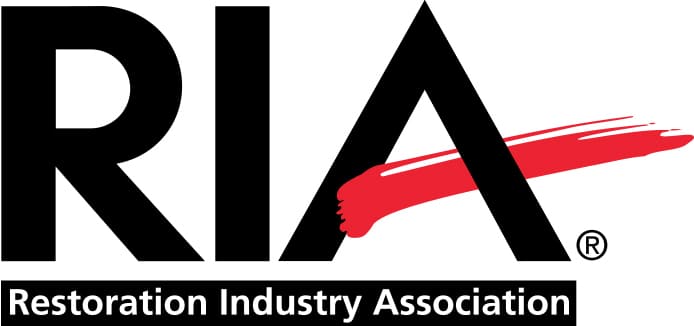
Water leaks can cause significant damage to your property, leading to costly repairs. Knowing how to deal with the insurance claim process can make a significant difference in receiving the compensation you deserve. When dealing with a water claim, it is best to hire a public adjuster for guidance. They handle the insurance claim on your behalf and also maximize your settlement.
In this comprehensive guide, we will walk you through how to make a successful water leak insurance claim. These tips will help you have a smooth claims process.
How To Successfully File A Water Leak Claim

Try to Mitigate The Damage
When you discover a water leak, immediate action can prevent further damage and support your insurance claim. First, locate and turn off the main water valve to prevent more water from causing damage. Next, move furniture, electronics, and valuables to a dry area to protect your property. Use towels, buckets, or a wet/dry vacuum to remove standing water. Finally, contact a reputable public adjuster near you for some clarity on how to proceed. The public adjuster will help with documentation, repair estimates, and all other aspects of your claim.
Reach Out To A Public Adjuster
A public adjuster is a professional who handles insurance claims on behalf of policyholders. Involving a public adjuster provides you ease during the insurance claims process. This is because they can provide invaluable advice to guide your process. Furthermore, a public adjuster will file all necessary documentation on your behalf.
Understand Your Insurance Policy
It is crucial to understand the details of your insurance policy. Policies can vary significantly, so knowing what’s covered and what’s not can save you time and frustration later. Know your coverage details because some policies cover sudden leaks, while others might exclude gradual damage. You should also be on the lookout for your deductible amount. This is in addition to any limits on your water damage coverage. Finally, be aware of any exclusions in your policy. Common exclusions include mold damage, foundation leaks, and sewer backups unless you have additional coverage.
Document the Damage
Thorough documentation is crucial for a successful insurance claim. Accurate records not only demonstrate the extent of the damage but also help substantiate your claim. You are to begin by capturing detailed images and videos of all affected areas from multiple angles. Make sure to include close-ups of damaged items and wide shots of the entire scene to provide a comprehensive view.
Next, create a detailed list of all damaged items, noting their age, condition, and replacement cost. Whenever possible, include receipts or proof of purchase to support the valuation of these items. Additionally, write a detailed account of the incident, noting the time and date you discovered the leak, the actions you took immediately afterward, and any immediate effects observed. This thorough approach will provide a solid foundation for your insurance claim.
Notify Your Insurance Company
Promptly notifying your insurance company about the water leak is essential, as most policies require claims to be reported within a specific timeframe. Start by finding the contact number for your insurance company’s claims department. Be prepared to provide your policy number, a clear and concise description of the damage, and any documentation you have gathered so far.
After making the initial call, it is important to follow up with a written summary of the conversation. This can be in the form of an email or a letter. Include the details discussed, and confirm the information provided during the call. This step ensures that there is a record of your communication and can help prevent any misunderstandings later in the process.
Discuss with the Insurance Adjuster
An insurance adjuster will assess the damage and determine the payout for your claim. Preparing for their visit can streamline the process. When dealing with insurance adjusters, you should involve your public adjuster. They are more evenly matched with the insurance adjuster and can negotiate better terms for you.
Arrange a convenient time for the adjuster to inspect the damage. Be present during the inspection to answer questions and provide information. Present all photos, videos, and lists of damaged items. This evidence supports your claim and helps the adjuster understand the extent of the damage. Clarify any uncertainties about the claim process and ask for an estimated timeline for the resolution.
Get Repair Estimates
Obtaining repair estimates from reputable contractors helps in understanding the scope of work needed and the associated costs. Get at least three estimates from licensed contractors. This gives you a better idea of reasonable costs and helps in negotiating with your insurer.

Ensure each estimate provides a detailed breakdown of labor, materials, and other costs. This transparency helps in comparing quotes and justifying expenses to your insurer. Furthermore, verify the credentials, licenses, and insurance of any contractor you consider hiring. Quality repairs are crucial to preventing future issues.
Submit Your Claim
Submitting a well-documented claim significantly increases the likelihood of a favorable outcome. Begin by filling out your insurance company’s claim form accurately and completely, ensuring that all required information is provided. Attach all relevant documents to support your claim, including photos, videos, repair estimates, and your written description of the incident. It is also important to retain copies of all documents you submit for your records. This ensures that you have a complete file of the claim process, which can be useful for reference or in case any issues arise later on.
Follow Up on Your Claim
After submitting your claim, remaining actively engaged and proactive can significantly expedite the process. One crucial step is to maintain regular communication with your insurance company to stay informed about the status of your claim as by reaching out periodically for updates, you demonstrate your commitment to resolving the issue expediently. It’s advisable to maintain a detailed log of all interactions with your insurer, noting dates, times, and the names of representatives you speak with. This documentation not only helps you keep track of the progress but also serves as valuable evidence in case of any disputes or delays.
Another essential practice is to promptly respond to any requests from your insurance company for additional information or documentation. Your cooperation in providing the necessary details can prevent unnecessary delays and facilitate a smoother claims process.
Additionally, it’s crucial to be aware of common mistakes that can potentially jeopardize your claim. One such error is delaying notification of the claim to your insurer. Timely notification is critical as delays could lead to complications or even denial of the claim altogether. Therefore, as soon as an incident occurs that may necessitate a claim, promptly inform your insurance provider to initiate the process without delay.
Furthermore, ensuring adequate documentation is vital to your claim’s strength. Insufficient or incomplete documentation can weaken your case, making it essential to gather comprehensive evidence such as photographs, receipts, and any relevant records. These documents should clearly outline the extent of the damage or loss, providing a clear picture to support your claim’s validity.
Finally, it is important not to accept the initial settlement offer from your insurer without careful consideration. Initial offers often aim to settle claims quickly and may not reflect the full extent of your entitlement. Take the time to review and assess the offer thoroughly. If necessary, consider negotiating for a fair and equitable settlement that adequately compensates you for your losses. A public adjuster can ease the process.
By avoiding these common pitfalls and following these proactive steps, you can enhance your chances of a successful insurance claim settlement.
Conclusion
Navigating the water leak insurance claim process requires preparedness, prompt action, and thorough documentation. Knowledge of your policy, quick action when a leak occurs, and maintaining detailed records, can significantly enhance your chances of a successful claim. Also, effective communication with your insurance company, working with reputable contractors, and being aware of potential pitfalls will help ensure a smoother process.
For added support, consider hiring a public adjuster specializing in water damage claims. At On-Site Adjusting, our licensed professionals understand the complexities of insurance claims, giving you the best chance of getting a fair settlement. We provide emergency water damage assistance, including clean-up and boarding-up services, ensuring your property is safe until restoration begins. Our experienced professionals are dedicated to restoring your home or business quickly, maximizing coverage while minimizing disruption and hassle.
Stay informed about your rights and the necessary steps to protect your property and secure the compensation you deserve. Following this comprehensive guide will empower you to handle water leak insurance claims efficiently and effectively. Contact On-Site Adjusting today for any insurance claim needs you may have.












